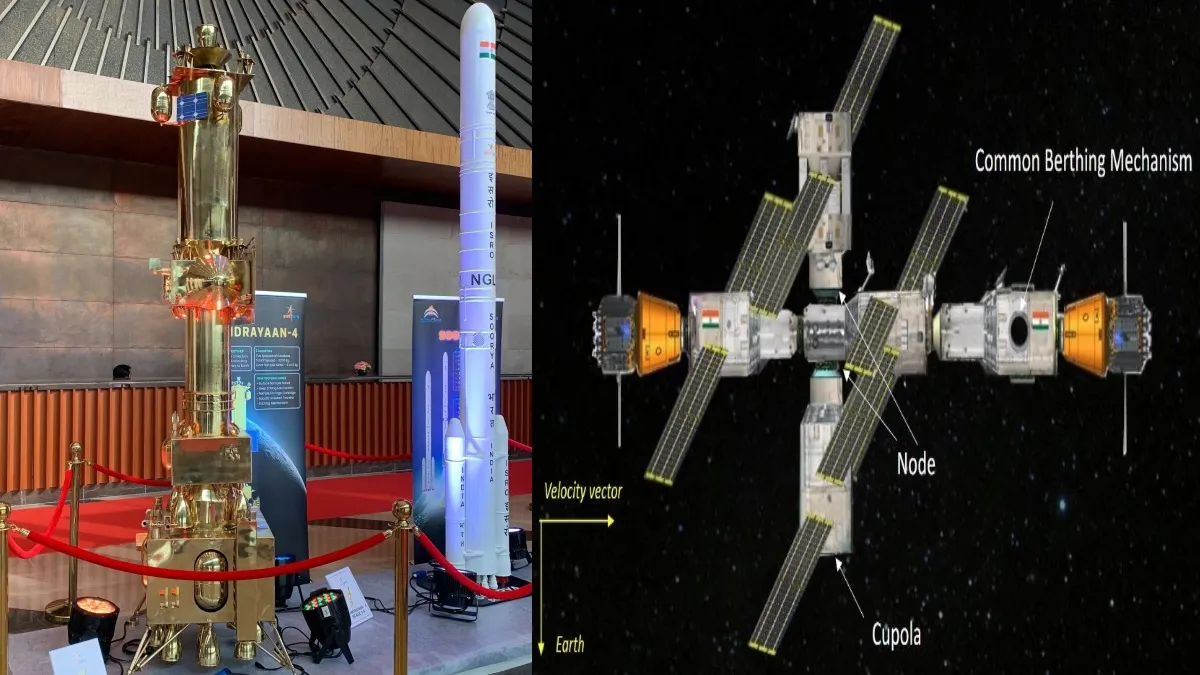Chandrayaan-4
Current Affairs International IssuesPosted by newadmin on 2025-03-24 08:38:34 |
Share: Facebook | Twitter | Whatsapp | Linkedin Visits: 17

Chandrayaan-4, India’s fourth lunar mission, is scheduled for launch in October 2027. The Indian Space Research Organisation (ISRO) aims to achieve a significant milestone by successfully landing on the Moon, collecting lunar samples, and returning them to Earth. This mission represents a major advancement in India’s space exploration capabilities.
The mission will consist of two spacecraft, each weighing approximately 4,750 kg. Instead of using a single large craft, ISRO will deploy two LVM3 rockets for the launch. The operation will require intricate docking and undocking procedures in space, contributing to India’s growing expertise in advanced space technologies.
The Indian Government has allocated Rs 2,104 crores (around $240 million) to this mission. The primary objective is to collect samples from the Moon’s southern polar regions, an area of great scientific interest. Chandrayaan-4 aims to place India among the elite group of nations, including the USA, Russia, and China, that have successfully conducted lunar sample return missions.
Lunar samples hold immense scientific value as they provide critical data about the Moon’s composition and history. While robotic landers can conduct studies on the lunar surface, their analytical capabilities are limited. Returning samples to Earth will allow for a more detailed analysis in well-equipped laboratories, leading to deeper scientific insights.
This mission will introduce several technological innovations, including a Surface Sampling Robot and an advanced drilling mechanism. These tools will enable the collection of both surface and sub-surface samples, ensuring a more comprehensive study. ISRO is focusing on self-reliance, developing all critical technologies domestically.
Chandrayaan-4 consists of five main modules: the Ascender Module (AM), Descender Module (DM), Re-entry Module (RM), Transfer Module (TM), and Propulsion Module (PM). After launch, the spacecraft will dock in an elliptical Earth orbit to form an integrated craft. The DM and AM will then execute a controlled descent to land on the Moon.
Once on the lunar surface, the DM will deploy a robotic arm to collect samples, while the drilling mechanism will extract materials from beneath the surface. The collected samples will be securely stored in specialized containers to prevent contamination during their return journey.
Following the sample collection, the AM will ascend to lunar orbit and transfer the samples to the RM. The TM and RM will then undock and execute a series of maneuvers to return to Earth. The RM will separate from the TM and perform a ballistic re-entry, ensuring a safe landing back on Earth.
Chandrayaan-4 is expected to lay the foundation for future manned lunar missions. It will also drive technological advancements, create employment opportunities, and contribute to skill development within India’s space sector. By demonstrating complex docking, landing, and return capabilities, the mission will help prepare for the eventual goal of sending Indian astronauts to the Moon.
Search
Categories
Recent News
- RBI's UDGAM Portal: Hyderabad's Cyber Fraud Warning
- Hyderabad Gears Up for Presidential Visit: Traffic Advisory Issued
- Hyderabad Crypto Scam: Unraveling a Multi-State Fraud
- Cyber Scams Target Unsuspecting Citizens via RBI Portal
- Telangana's Tech-Driven Policing: Drones Take to the Skies
- RBI Governor Prioritises Digital Security: A Strategic Shift
- Hyderabad's Massive Anti-Drug Operation: 72 Foreigners Deported
- Hyderabad Tackles Traffic with Innovative Parking Solutions
Popular News
- Navigating IPO Market Dynamics Amid Volatility and Regulatory Changes
- Innovative Green Practices and Environmental Initiative
- Massive Worldwide Microsoft Outage Disrupts Multiple Sectors
- తెలుగుదేశం పార్టీ - పేదరికాన్ని నిర్మూలించడంలో వాగ్దానం
- Universities Embrace Remote Learning Technologies Amidst Ongoing Pandemic